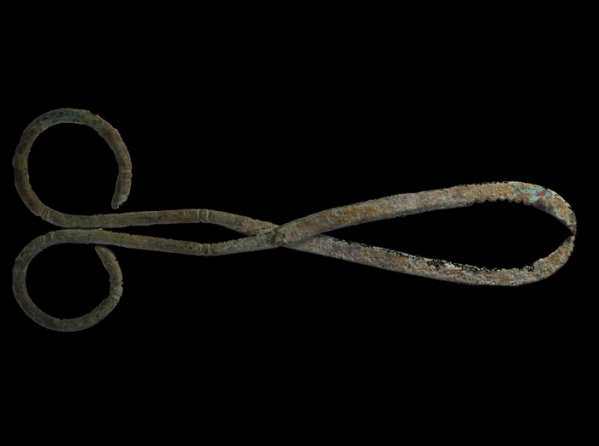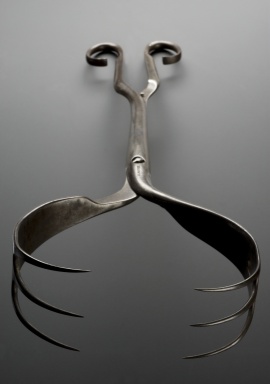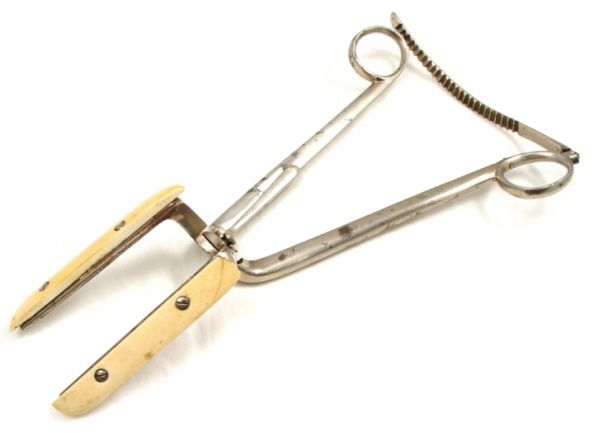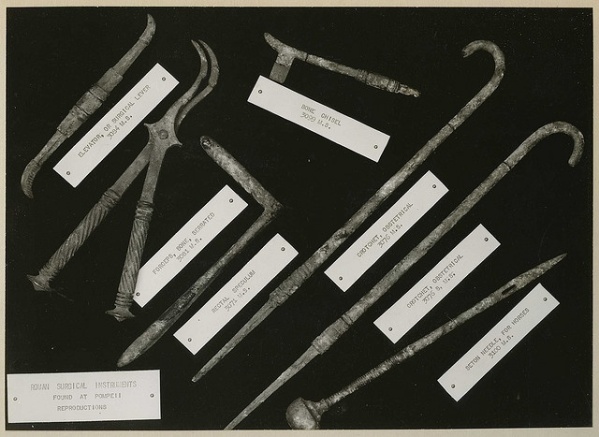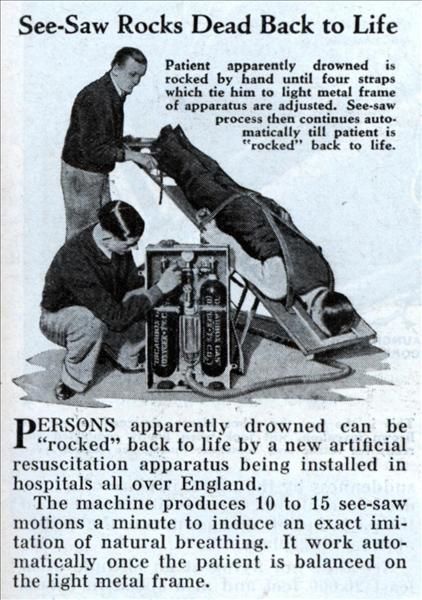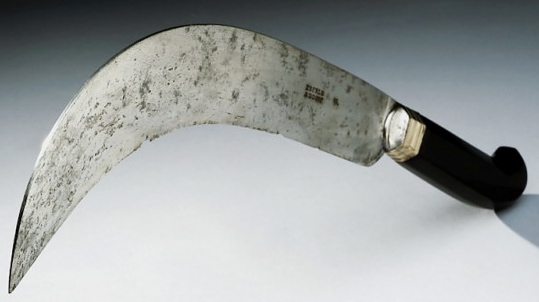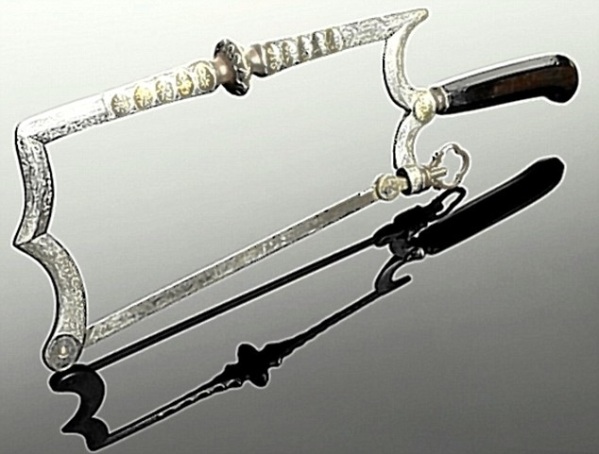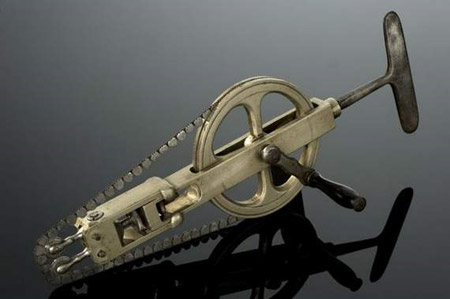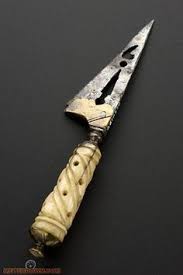1. This ancient gynecological tool is called a “cephalotribe”. It is a medical instrument used by obstetricians to grip the skull of stillborn fetuses.
It was used around the 1st – 2nd Century AD in cases of obstructed labor to aid delivery. The scissor-like curved arms with teeth-like edges are used for gripping.
2. This is also a “cephalotribe” (Geneva, Switzerland, 1750-1850) with three vicious looking pronged hands that is used to crush the skull of a dead fetus inside the mother’s womb. This instrument was made by a Swiss instrument maker Demaurex.
3. These forceps were used to grasp a hemorrhoid between the blades and apply pressure to stop the blood supply, causing the hemorrhoid to drop off.
4. These are Roman Surgical Tools found at Pompeii, a city that was believed to be founded in the seventh or sixth century BC. The city was destroyed during the eruption of Mount Vesuvius in 79 AD. The city was mostly destroyed and buried under 4 to 6 m (13 to 20 ft) of ash and pumice in the eruption. In the year 1748, the city was rediscovered by a Spanish Engineer Rocque Joaquin de Alcubierre. The remains of the city was well preserved because of the lack of air and pressure.This allowed one to see the exact position the person was in when he or she died. These instruments were also recovered from the site.
5. This is a Roman trivalve vaginal speculum with replica screw (ca. 99 B.C.–A.D. 400) found in Lebanon. I wonder how it works. I really don’t wanna know.
6. Do you wanna try this Schnee Bath? Anyone?…
“The Schnee Four Cell Bath was used for treating rheumatism and painful joints, with a bath for each limb. Each bath had its own current. There was no danger of electric shock as the porcelain tubs were not connected to water pipes and were well insulated from earthing. It also allowed the person to be treated without undressing, speeding up treatment times and proving much more comfortable and convenient than a full body bath.”
– Sacred Medical Order Church of Hope
7. An amazing See-Saw that brings a drowned person back to life!
8. The earliest way of blood transfusion.
9. During the World War I, DDT was used to kill the lice on millions of refugees and displaced persons. DDT was later proven to be dangerous to human health.
It was during the World War II that a vaccine for the disease was made. These cages houses typhus carrying lice feeding them with human subject. It was the only way to produce a viable typhus vaccine.
10. It was illegal to sell or promote any form of contaceptives during early 1900s. These birth control devices were sold and advertised as pessaries. They were place in the cervix with the stem inside the uterine cavity. These pessaries were the forerunners of the modern day IUD
11. This is an amputation knife (1700s) were typically curved for surgeons to make circular cuts through the skin and muscle before the bone was cut with a saw.
12. This is an elaborately decorated Amputation Saw used in the 1600s.
13. Artificial Leech (1800s) Bloodletting with leeches was such a popular treatment for a range of medical conditions that an artificial leech was invented in 1840 and was used frequently in eye and ear surgery. The rotating blades would cut a wound in the patient’s skin, while the cylinder would be used to produce a vacuum that sucked up the blood.
14. Skull Saw (1830s-60s) This hand-cranked saw’s blades were used to cut through sections of the skull, allowing for access by other instruments.
15. Circumcision Knife (1770s) Ritual circumcision is performed around the world in varying extents and for varying reasons, but few instruments used in the process are as intimidating as this European knife from the 18th century.
I can’t imagine how this instruments were used in an actual operation. I think these tools killed more men than any disease they had. Some tools even existed prior to the discovery of anesthesia. What do you think is the scariest instrument on the list. Don’t forget to share this post to your friends and feel free to share your thoughts below.
